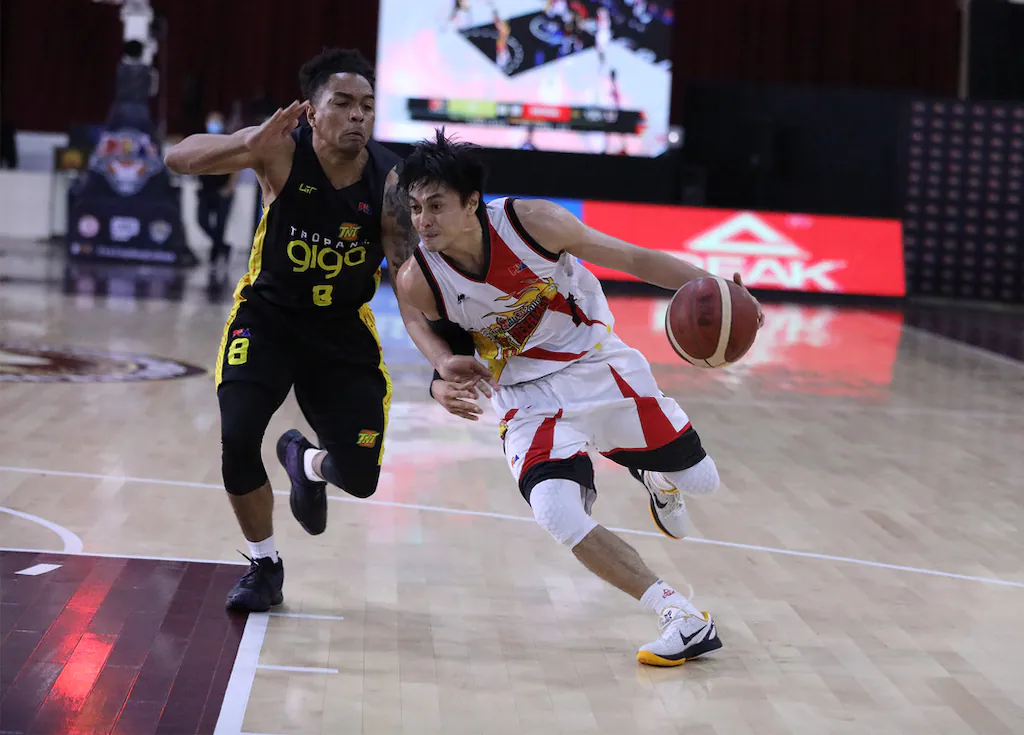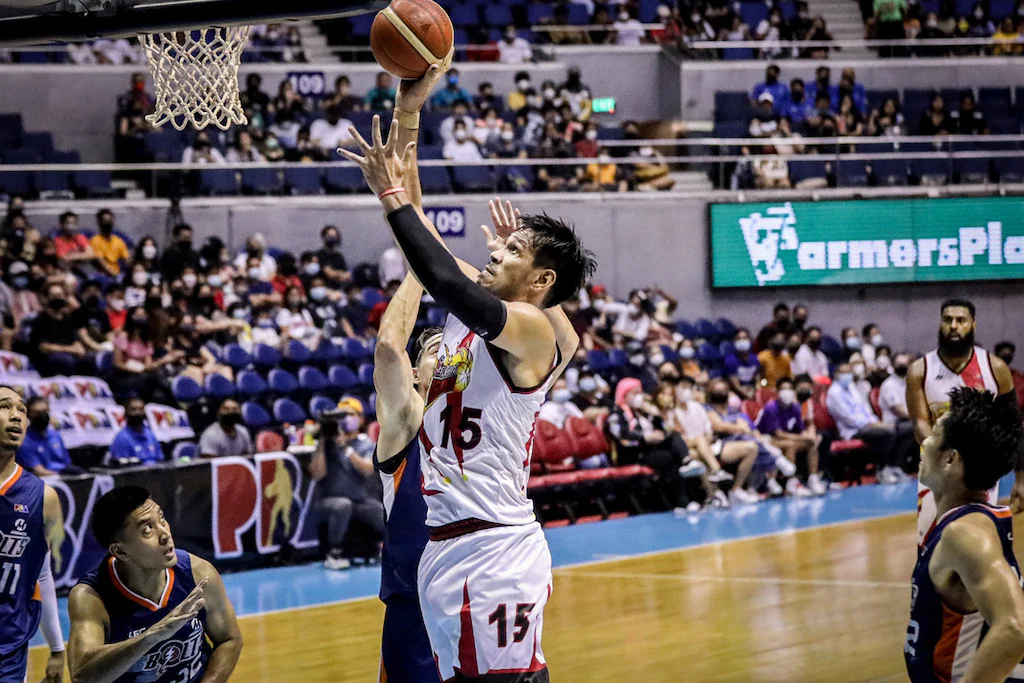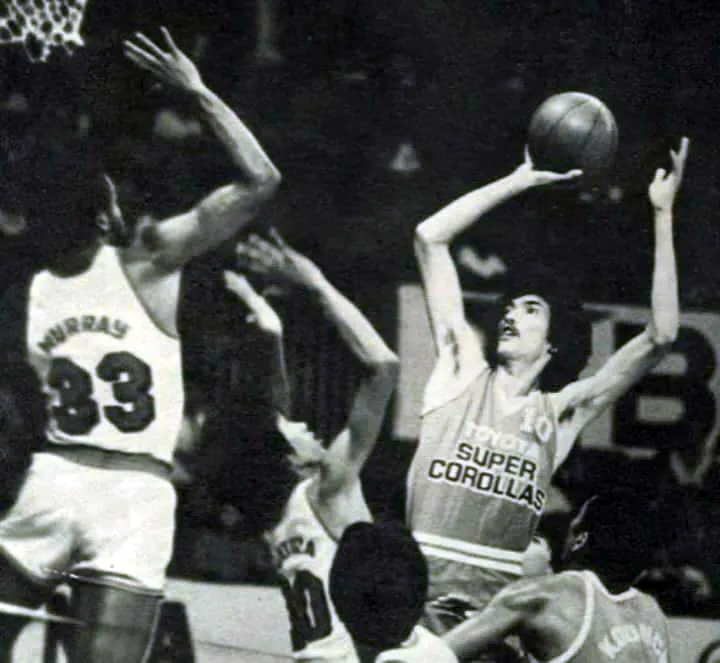With less than three seconds remaining in the game, your team is down a point, who should take the last shot? Better yet, what kind of shot do you want him to take?
In the 47-year history of the PBA, we’ve been witness to an assortment of patented moves coming from the players. It is not uncommon to see these moves utilized when the game is on the line. We sometimes wonder why opposing teams can’t seem to stop them – they’re the players expected to make the last shot – their signature one at that.
The Rivalry lists down 15 clutch go-to shots in PBA history in random order.

Terrence Romeo (The Killer Crossover)
Romeo’s vaunted separation move using the crossover stepback has allowed him to extricate himself from a sticky defense to get an open, yet difficult shot. Using his quickness and deft ballhandling to find separation between him and the defender, this move draws oohs and aahs from the crowd almost every time. More importantly, Romeo is comfortable doing this at any given time of the game, even during the closing seconds.
Allan Caidic (The Off the Screen Snapshot)
What makes Caidic so difficult to defend is his ability to take a quick shot from a feed. Even more, Caidic is perhaps the best player when it comes to maximizing the pick from his teammates to get himself open. With guys like wily veterans Abe King, Philip Cezar and Manny Victorino setting those screens, Caidic is almost guaranteed to be free for an open shot. And for the Triggerman, a split second is more than enough to get a good shot.
Ronnie Magsanoc (The Quick Release Trey)
Magsanoc’s best years were in 1990 and 1991 when he was almost unstoppable. Bruised and battered by the physical defense of the Añejo / Ginebra defenders in the finals of these two seasons, the Point Laureate’s speed to get himself an open quick shot was deadly accurate that gave Formula Shell its first PBA title in 1990, later to be followed with another title in the First Conference of the 1992 season.
Hector Calma (Midrange Jumper from a Kickout)
Calma’s been blessed with having quality teammates all throughout his PBA career with SMB. He stood out because of his exceptional court generalship but more often than not bailed his team out of trouble by knocking in top of the key midrange jumpers from a kickout from a twin-defended teammate.
Jerry Codiñera (The Side Bank)
Codiñera may be the second best player in PBA history to utilize the bank shot efficiently, just next to Freddie Hubalde. What made this stood out was his uncanny ability to sink these shots at the critical moments of the game, particularly when teammate Alvin Patrimonio was double-teamed at the other side of the paint. A picture precision shot that’s extremely difficult to defend.
Jojo Lastimosa (The Perimeter Jumper)
Lastimosa wasn’t called the Fourth Quarter Man for no reason. One of the greatest clutch players in PBA history, he took over during crunch time when only a few wanted to. Finding himself open in the corner, Jolas would wait for a pass from a cutting Johnny Abarrientos and find those clutch shots swishing the net.
Johnny Abarrientos (Pull-Up)
The Alaska Aces of the 90’s had everything so good. When Abarrientos didn’t get to feed an open Lastimosa at the corner, he’d normally take it upon himself to pull up after a burst of speed for a medium range jumper. Dindo Pumaren and Bal David, two speedsters themselves, just couldn’t find ways to stopping the deadly Flying A pull up.
Alex Cabagnot (Top of the Key Three)
How often have we seen Cabagnot take the final shot and give the win to SMB when he was still a Beerman? It’s almost a common sight, A-Cab pulling up and taking a jumper from beyond the arc. He has become the previous decade’s version of Mr. Clutch, and his willingness to take the final shot with the game on the line gave The Cool Whip a slot in this list.
Mark Caguioa (One-Handed Floater)
During his younger years, Caguioa would not hesitate to attack and penetrate to get the two points from within 8 feet. In the latter years, the Spark became a go-to guy for the Kings. His favorite spot was at both corners just outside the box, where he would take his patented one-handed floater, going past the outstretched arms of his defender, reminiscent of Francis Arnaiz’s version of a teardrop shot minus the looping arc.
James Yap (The Flip of the Finger Shot)
Not all players are blessed with large hands capable of handling the ball with ease. Robert Jaworski, Sr. had them; James Yap possessed the same physical gift. Makes it easy to understand Yap’s ability to clutch the ball with ease. Crunch time, and Yap was the recipient of the ball. Using the screen, he moved around, spotted up and flipped the ball using his fingers for the winning shot. Effortless and a picture perfect form to boot.
Jayson Castro – The Hesitation Dribble Before the Penetration
There’s no denying Castro has been the quickest player in the PBA for several years. And because he also has the three-point shot as a vicious weapon in his offensive arsenal, the Blur has become one of the deadliest clutch players today. He dribbles from top of the key, makes a hesitation move, then explodes towards the basket or takes a quick jumper. How many times did we see this move ending up as game winners?
Bogs Adornado – The Pump Fake and the Jumper to Draw a Foul
They say that the pump fake, perhaps one of the slickest moves in the 70’s and 80’s, is a lost art. We still see a bit of this from Beau Belga when he fakes a three-point shot, then uses a quick first step to leave his defender. But there was no one who used the pump fake better than Adornado, the league’s greatest perimeter shooter of all time. The three-time MVP winner’s greatest offensive weapon was also his most clutch – receiving the ball, setting himself up for a jumper, making a fake shot to put his defender in the air, then elevating, bumping his opponent, drawing a foul, and swishing the net for an and one (or, as it was known back then, “counted”) opportunity.

June Mar Fajardo – The Seal
Jockeying for position inside the paint is not fun, especially when the man you’re trying to stop is June Mar Fajardo. The 6’10 behemoth isn’t just a skyscraper, he’s a muscular one who knows how to position and pivot well. One the Kraken finds his spot and seals his defender, chalk up an automatic two points for the Beermen, an “and one” situation at that. This is the Beermen’s bread and butter play, perhaps the most formidable offensive go-to move for nearly a decade already.
Alvin Patrimonio – The Spin Move
Captain Lionheart earned his name because he was the primary go-to-guy of the 90’s. Patrimonio used his muscle and strength to back down on his opposing defender and then make that vaunted pirouette and leaving his defender eating dust in the process. Just how potent was this play? Let’s just say that during The Captain’s peak years from 1991-1997, the Hotdogs went to this play almost exclusively every time, with success. Several playoff games were won because of this move.

Ramon Fernandez – The Elegant Shot
No question about it. When El Presidente moved to either side of the perimeter and took off, his right knee protruding to provide separation between himself and his defender, his body contouring in mid-air, and ball in his right hand, Fernandez gently releasing the ball with his fingers was a sure pair of points. This move, part of Don Ramon’s offensive wizardry dating back to 1979, and perfected in 1984, was practically indefensible – opposing teams could only hope that he misses the shot. The elegant shot gave Fernandez’s teams more than their share of victories and championships, making it perhaps the most popular signature shot of all time in the PBA.
Jay Mercado is a school administrator and part-time graduate school professor who used to write for FHM Philippines and SLAM Philippines. His area of concentration is Philippine sports history.
